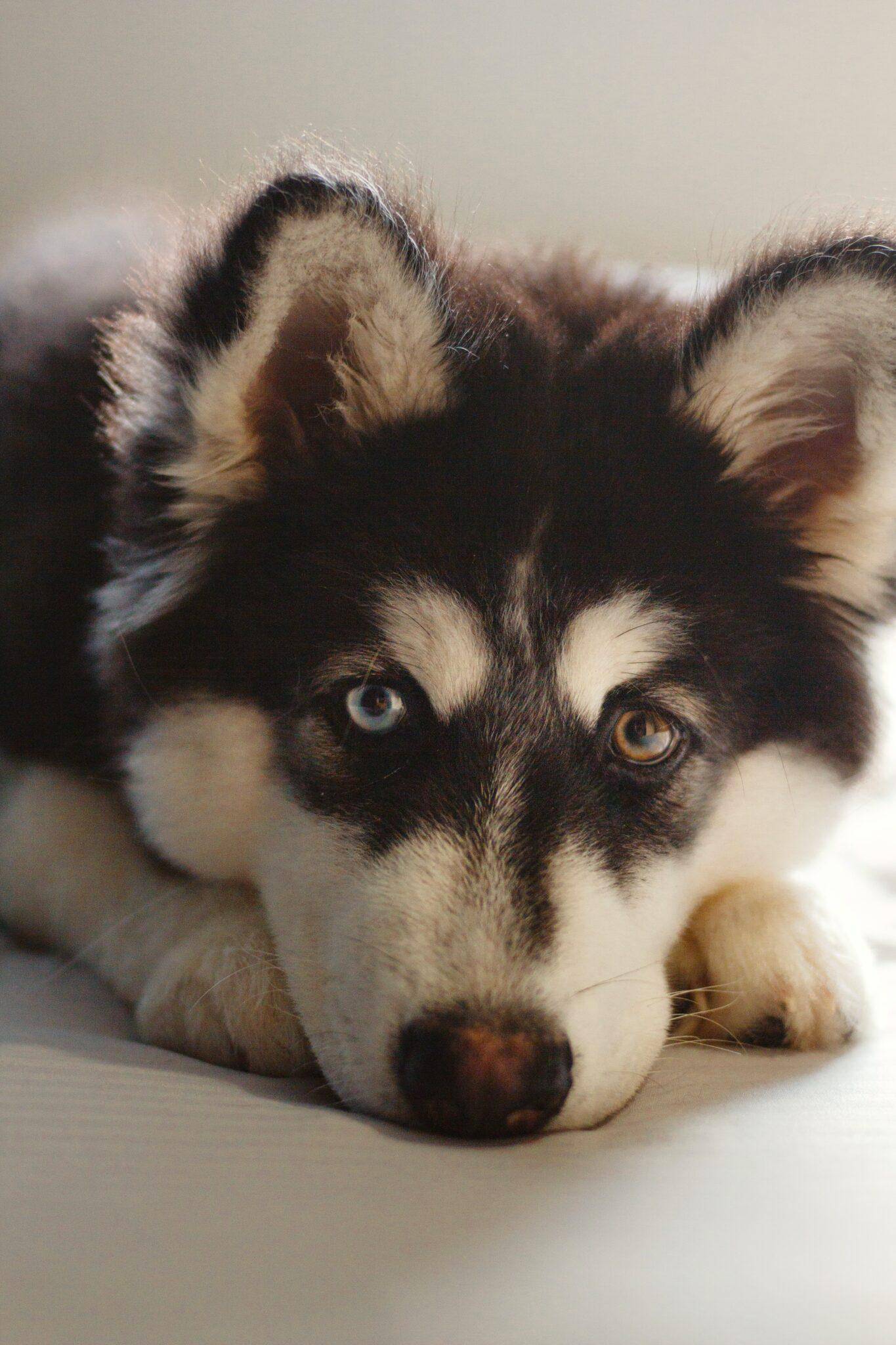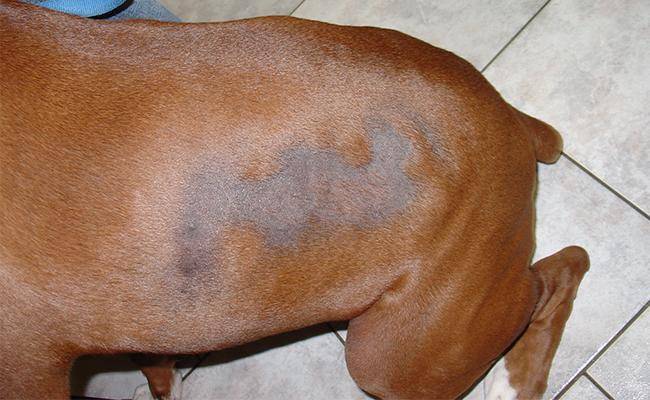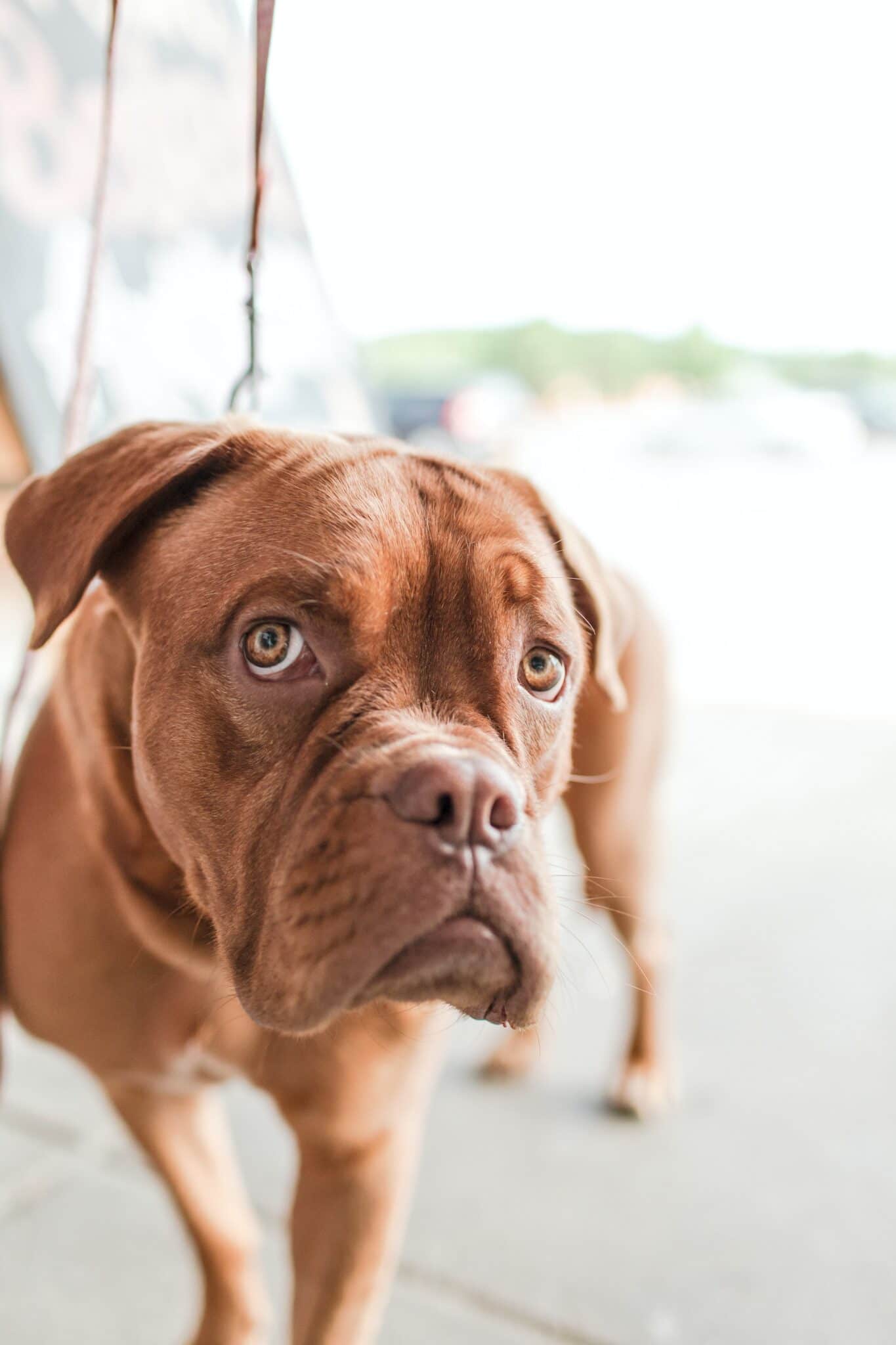Table of Contents
Dogs are our furry and fluffy friends. One of the reasons we adore our dogs is their smooth fur. But this same thing is a problem or can cause a problem. If you are a new dog owner, there are certain things you should know about. Whereas, if you own one such furry pet, you should be aware of Alopecia.
All the new dog owners always complain about finding dog hair on the couch, bed, floor mat, and almost all around the house. Later on, they get used to it because the love and happiness a dog spreads in our family is much more than the problem of your dog losing hair, right?

Dog losing hair in some amount is normal and natural. It is called as shedding. Many dog breeds grow thick hair coats during winter, and they shed their old hair as spring arrives. It is a natural process and not something a dog owner should worry about.
Well, Do not get confused between shedding and extensive loss of hair. If a dog losing hair in an extensive amount as compared to normal shedding, then this difference is easily noticeable. Therefore, there is no need to worry, especially if you are a new dog owner.
However, if you notice your dog losing hair extensively, then it might be a problem. In dogs, this condition is termed as ‘Alopecia’. This is a condition in which dogs lose their hair in certain spots or completely from their body. We will talk more about this later in the article.
Why Do Dogs Lose Their Hair?
A dog’s hair tells a lot about its physical health. A healthy diet providing all the necessary nutrition to your dog and a proper lifestyle will make sure he/she is healthy. Periodic visits to the veterinary doctor for a routine checkup is another good habit for a healthy and happy dog.
Despite a healthy diet or positive environment, cases of a dog losing hair can still be found in different breeds. The reason for dog losing hair can be many. Among which, some are known, whereas some are still unknown.

The primary reason for dog losing hair is the shedding of hair. It is not a disease nor a problem. Dogs generally grow a thick layer of hair in winter to protect themselves from cold.
During the spring season, they began to lose old, damaged hair to survive in the heat. It is a natural phenomenon and a mechanism to adapt itself according to temperature.
No matter what breed you own, every dog undergoes shedding. In some breeds, during the shedding cycle, a dog losing hair can be seen in greater amount, whereas in some breeds it might be comparatively less. However, the amount of shedding also depends on the pregnancy status and the overall health of a dog. Let us first understand what shedding actually is.
Shedding is a process in which a dog loses dead, damaged, and old fur to make place for new hair to grow. Shedding can occur seasonally (mainly in summer), whereas some dog breeds shed constantly throughout the year.
Every dog undergoes such a shading cycle, and this hair loss is normal and cannot be prevented. But if you notice excessive shading, which is abnormal in any way, medical attention should be given to examining the cause.
How To Know They Are Losing Their Hair?
As we have already discussed, a dog losing hair is common, and it is termed as shedding. However, if a dog has open spots on its skin, then that may indicate that the dog is suffering from some disease or infection or a condition called alopecia.
Unlike humans, we cannot read emotions on a dog’s face easily. Therefore we have to look for other means of knowing the health of our furry friend. It is said that a dog’s coat (Skin along with hair) indicates the health of a dog.
It is extremely important to spot alopecia which is a condition of a dog losing hair as earliest as possible. It is better to begin treatment at an early stage to keep your dog healthy. There are a number of symptoms you should look for, which indicate alopecia.
- Excess shedding than usual
- Inflammation around the bald spot
- Itchy skin
- Rashes on skin
- Dark patches on the skin
- Smelly skin
- Dandruff
- Constant scratching or licking the infected part
- Dry coat or weak and brittle hair
If you spot any of these symptoms, visit a veterinary doctor and get your dog examined. Alopecia is curable with proper diet and care.
Major Reason Causing Hair Loss In Dogs
The most common and major reason for dog losing hair is due to mange, and it is found all around the world. It is caused by parasites that live on the skin of your dog and causing some critical health issues.
Two types of mange can attack your dog, sarcoptic mange and demodectic mange, and are caused by different types of parasites. Infection from any of these mange can result in your dog losing hair abnormally. Both of these types of mange in dogs are treatable and curable with proper medication and care.

Sarcoptic mange is caused by a parasite called mite, which burrows just beneath the surface of the skin. Sarcoptic mange causes itching of the skin, and dogs to start to scratch and chew their own skin in order to get relief. But it results in thicker and darker skin with loss of hair.
The sarcoptic mange is easily treatable and is done by scraping the skin under the microscope to get rid of mites. After which disinfecting bath, as well as medication, is provided as a treatment.
The other type of mange is demodectic mange, and it is not as critical as sarcoptic mange but requires a lot of medication to get cured. It is called Demodex Canis. These parasites are found in the hair follicles of a dog. They are not much harmful and are usually infect puppies and young dogs of 12-18 months.
Types Of Problems That Cause Hair Loss
Dog losing hair is a common case in most street dogs, whereas it is also seen in pet dogs as well. Reasons for hair loss can same or different in both cases. In this article, we are focusing more on pet dogs, considering the environment they live in.
We have already seen the symptoms that indicate your dog might have alopecia which is hair loss in dogs. These symptoms include all the possible causes leading to hair loss in dogs. Let us see some common and uncommon problems that might cause hair loss in dogs.
1. Allergies
One of the most common causes of a dog losing their hair is allergies. Similar to humans, even dogs can have allergies. Food allergies are rare but cause skin itching followed by hair loss. If your dog is showing symptoms like losing hair, constant scratching, or being uncomfortable due to skin, then it’s an indication of food allergies.
Allergies to environmental factors are more common and are similar to human allergies. These include allergies such as pollen, dust, grass, plants or parasites like fleas and mites. Among all these allergies, the symptom is common, and that is itching followed by scratching and, in turn, causing hair loss.
2. Infection
Parasites like fleas, mites, and ticks can make your dog uncomfortable and, if ignored, can lead to hair loss. These parasites are the reason for skin irritation which can also lead to bacterial infection. All together results in hair loss of the dog along with rashes and inflammation.
Today, there is a number of products available in the market which prevent the attack of ticks, mites, fleas, and lice. But before using any of those products, it is advised to consult your vet first.
3. Pressure Sores
It is a type of skin injury that can lead to hair loss in dogs. As dogs grow old, their activity keeps on decreasing. They spend most of the time lying around. If a dog lays on a hard surface for a long time without changing position, the weight causes a restricted flow of blood in that region.
Thus damaging the skin and tissues which leads to open wounds at that spot which ultimately causes bald spots on the skin. This is generally found in older dogs who are less active, and such pressure sores should never be neglected.
4. Genetics
One reason for dog losing hair can be genetics. Genetically, some dog breeds can be more prone to baldness than others. This is not a problem and does not require treatment usually. Though it is advised to consult with a vet to rule out any other causes of hair loss.
So far, we have seen that there are a number of reasons that can cause your dog to lose hair. But it is important that you notice their hair loss in time in order to begin treatment for the cause. Let us see how you can identify if your dog is losing hair in an unusual manner or not.
5. Cushing’s disease
Another reason a dog might lose its hair is because of Cushing’s disease. This disease is also found in humans. A body hormone called ‘cortisol’ produced by a dog’s adrenal glands causes this disease.
If the body tissues are exposed to excess cortisol levels for a long period, the appetite of the dog increases. This disease is generally common in mid-aged and well-grown dogs.
The symptoms of Cushing’s disease include hair loss, darkening of skin, bloated or pot-bellied appearance. It also leads to lethargy in dogs, and it is easily noticeable if your dog is becoming less and less active.
Basic Care To Prevent Hair Loss In Dogs
If you initially suspect that your dog might be suffering from alopecia by analyzing the symptoms I mentioned above, you should try out some home remedies to cure hair loss or just observe some preventive measures to avoid hair loss of your dog.
First of all, let us see some basic preventive measures you can take to make sure your dog remains healthy and fluffy.
- Take your dog to the vet for a complete medical examination at least once a year.
- Observe and inspect general symptoms of hair loss.
- Carry out regular treatment for the prevention of parasites like fleas and lice.
- Feed your dog with nutrition-rich food for better health and immunity.
- Keep your dog happy and active for better mental health.
- Use special shampoos certified for use on dogs to prevent itching.
- Use conditioners followed by shampoo to keep the skin of your dog nourished and moisturized.
Even after observing the above precautions, if your dog is facing hair loss, then you might need to consider visiting a vet for treatment. However, if you are looking for home remedies to cure mild hair loss, you can check out the options listed below.
- If your dog has bald spots on the leg and belly, it might be an indication of a pressure sore. Try switching to more comfortable and softer betting for your dog.
- If you suspect your dog is allergic to pollen, grass, dust, or any other environmental factors causing hair loss, try feeding raw honey to your dog. Honey helps to treat skin allergies.
- Use approved shampoos to get rid of parasite based issues causing hair loss.
Note that, in an extreme case of your dog losing hair, consulting with a veterinary doctor at the earliest is advised.
What Treatment Is Required For Alopecia?
The treatment required for any case of the dog losing hair loss can differ and usually depends on the type of problem causing hair loss. Visit your veterinary doctor for an examination and find out the cause of the hair fall. Depending upon the problem, possible treatment should be started.
Skin-related infections caused by parasites like fleas can be treated by using antibiotics. Also, a regular bath with disinfecting shampoo is advised in general. The shampoo is effective against sarcoptic mange and demodectic mange.

Other skin conditions such as inflammation or open wounds can be treated using antifungals and steroids. If your dog has been attacked by a tick, visit a veterinary doctor to remove those ticks. Also, disinfect your dog’s bedding followed by medications.
To fight worms and infections caused by worms, the veterinary doctor generally prescribes de-worming in treatment. Infections from worms can result in a dull coat or thin hair, and it is easily noticeable.
If your dog is facing dandruff issues which are generally due to parasites like lice, it can make skin dry and cause severe hair loss. Consult a veterinary doctor for proper medication and disinfect all the dog items like toys and bed too.
If your dog has allergies, antihistamines can be used to treat those allergic reactions. However, in case of allergies, visit a veterinary doctor to find out the exact source of the allergy. A strict diet for 5-8 weeks is to be followed as a part of treatment.
Most of the causes of a dog losing hair have symptoms like itching, which is followed by a dog licking and chewing the particular area. To prevent this behavior of the dog, an Elizabethan collar can be used.
Coming to the diet and nutrition, specific items and nutritions are to be included in the diet in order to get healthy, thick fur. Fish oil, vitamin A, and vitamin E, these three items can help in treating dry skin and skin infections.
Cessation | Dog Losing Hair
To conclude everything that has been stated so far, dog losing hair is a serious issue and can cause discomfort and irritation. Consult a veterinary doctor in any severe case of hair loss instead of neglecting it.
All the above mentioned issues related to the dog losing hair are common but does not occur easily. Dogs in most situations are immune to such diseases and infections. But if you notice any signs, symptoms, or unusual behavior, a precautionary visit to the veterinary doctor is always a better decision.
Next time you visit your vet for an annual checkup of your dog or for any treatment, ask them about precautionary measures to be carried out in case of the dog losing hair. This will make sure your dog stays healthy. I hope you have found all your answers regarding hair loss in dogs.
If you have any more queries or if you want to share your experience regarding the alopecia of your dog, feel free to mention it in the comment box given below.
Please note that this article is just an informative piece and does not mean to replace any diagnostics or treatment. Only follow the prescriptions given by the veterinary doctor and follow the treatment accordingly.

